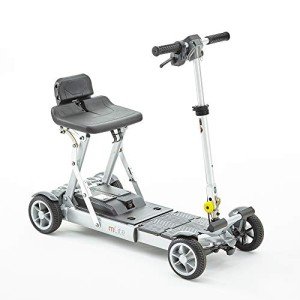Understanding Mobility Aids: Enhancing Independence and Quality of Life
As society continues to age and people significantly seek methods to preserve self-reliance, the need for mobility aids has never ever been more important. Mobility aids, which incorporate a series of devices created to assist individuals with walking or moving, play an essential function in promoting mobility, improving security, and improving general quality of life. This article will check out the numerous types of mobility aids, their benefits, factors to consider for selection, and answer some often asked concerns.
Kinds Of Mobility Aids
Different mobility aids are available, each developed to address specific requirements. The following table sums up a few of the most common kinds of mobility aids and their features.
| Type of Mobility Aid | Description | Best Suited For | Key Features |
|---|---|---|---|
| Walking canes | A handheld stick offering support and balance. | People who need very little support. | Light-weight, portable, adjustable height. |
| Walkers | Four-legged frames offering stability. | Those needing substantial support while strolling. | Foldable, some with wheels, included security features. |
| Rollators | Wheeled walkers with a seat for resting. | People needing mobility with the choice to rest. | Brakes, baskets for personal products, adjustable height. |
| Wheelchairs | Chairs with wheels for people with limited mobility. | Those not able to stroll or requiring extensive assistance. | Handbook or powered choices, personalized seating. |
| Scooters | Motorized devices for larger distances. | Individuals with limited endurance however needing self-reliance. | Different sizes and styles, typically portable. |
| Crutches | Support devices placed under the arms or forearms. | Individuals recuperating from lower limb injuries. | Adjustable, lightweight, needs upper body strength. |
| Stairlifts | Mechanical devices for moving between floorings. | Users facing difficulties in multi-level homes. | Personalized for various staircases, automated. |
Benefits of Mobility Aids
Mobility aids offer a variety of benefits that can substantially boost the lives of individuals facing mobility challenges. Some noteworthy advantages consist of:
- Increased Independence: Mobility aids empower people to move easily without counting on others for assistance, thus enhancing their self-confidence and self-esteem.
- Enhanced Safety: Using mobility aids can minimize the threat of falls and injuries, particularly for older adults or those with balance concerns.
- Enhanced Quality of Life: By assisting in mobility, individuals can engage in social activities, attend occasions, and take pleasure in life more fully, adding to much better psychological and psychological health.
- Rehabilitation Support: After surgery or injury, mobility aids supply essential support and stability, aiding in healing and rehab procedures.
- Accessibility: Many mobility aids are designed to be used both inside and outdoors, making sure that individuals can navigate various environments with ease.
Factors to Consider When Choosing Mobility Aids
Picking the proper mobility help requires careful factor to consider of numerous aspects, including:
| Factor | Factors to consider |
|---|---|
| User's Needs | Examine the level of mobility required; think about whether the user needs temporary or long-lasting assistance. |
| Physical Limitations | Evaluate the user's strength, balance, and coordination to determine the very best type of help. |
| Setting | Consider the main environments where the aid will be utilized, such as home, outdoors, or specific terrains. |
| Weight and Portability | Guarantee that the chosen device is manageable relating to mobility and storage, specifically for outside usage. |
| Budget plan | Mobility aids can be found in a series of rates; think about insurance protection and available funding options. |
| Adjustability | Pick aids that can be changed for height and convenience to accommodate growth or changing needs. |
Frequently Asked Questions About Mobility Aids
1. How do I know if I need a mobility help?
Many elements can indicate the need for a mobility aid, such as trouble walking or balancing, fatigue while standing, or a recent surgical treatment affecting mobility. Consulting with a healthcare expert can provide guidance tailored to specific requirements.
2. What kinds of mobility aids are covered by insurance?
Protection differs in between insurance companies, but many supply options for resilient medical equipment, which normally includes wheelchairs, walkers, and some kinds of walking canes. Talk to your insurance coverage supplier for particular coverage details.
3. Can mobility aids be utilized outdoors?
Yes, lots of modern mobility aids are created for outdoor usage. Rollators, scooters, and some walkers are geared up with functions for stability and ease of use on various terrain.
4. How do I keep my mobility help?
Regular upkeep involves looking for any wear and tear, guaranteeing that parts such as wheels, brakes, and frames are operating properly, and cleaning the equipment as needed. Following mymobilityscooters.uk is vital for security.
5. Is there a danger of ending up being based on mobility aids?
While some users might end up being reliant on mobility aids, they are created to promote self-reliance and mobility. Slowly using a mobility help can enhance confidence and help keep physical strength and coordination.
Mobility aids are vital tools that empower individuals to get rid of physical difficulties, promoting self-reliance and boosting quality of life. By comprehending the various kinds of mobility aids available, their benefits, and crucial elements for consideration, households and caretakers can make informed decisions that best meet the requirements of their enjoyed ones. With the right assistance, those with mobility challenges can lead satisfying and active lives, free to explore the world around them.

